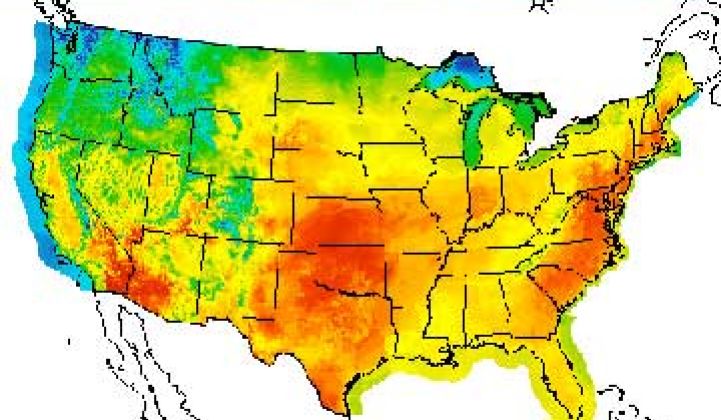When New York City Mayor Michael Bloomberg held his regular radio show live from City Hall on Friday, he urged New Yorkers to keep their air conditioning no cooler than 79 degrees during the day and throughout the weekend.
If you hadn’t been listening, you might have missed it. Most New Yorkers did. Consolidated Edison also asked its customers to curb electricity demand via a press release. Again, not very effective.
The urging comes as Con Edison, which serves New York City and Westchester County, is experiencing record-breaking power delivery and has already reduced voltages to some parts of Queens and Westchester, resulting in brownouts. It’s the same everywhere: hot.
PJM Interconnection set a new record for peak power use on Thursday, delivering 158,450 megawatts of power across its mid-Atlantic territory. On Wednesday, the Midwest Independent Transmission System Operator hit a record too, delivering 103,975 megawatts across 12 Midwest states. MISO’s record power delivery forced the organization to declare an emergency alert.
The brownout for some 100,000 Con Ed customers is not ideal, but many argue that it could be worse (think 2003). “Con Ed has done a great job so far,” Mayor Bloomberg said on Friday. But it could be a lot better.
"System operators refer to a rolling blackout or brownout as 'load shed,'" said Chet Geschickter, Senior Smart Grid Analyst at GTM Research. "But to a customer, losing power is an outage, and a nasty one at that if it's during a heat wave. None of this would be necessary if a reliable demand curtailment program was in place. It's better to take a little from a lot of people than it is to take everything from a few people."
Although Con Edison and other utilities have various demand response programs, mostly in the C+I sector, there needs to be a whole lot more, and a whole lot more automation on the residential side to be able to manage peak loads as effectively as possible.
“With today’s smart monitoring, diagnostic, control and in-home technologies, utilities can ensure they meet this demand in a cost-effective and sustainable manner and that consumers have better information to manage their usage and costs,” said Bob Gilligan, President & CEO of digital energy for GE Energy. The technology is here. It’s time to deploy it.
Sweltering summers have become the norm, not the exception, across much of the U.S. It is during these peak hours that a smart grid can deliver on its promise. The sun is beating down on most of the U.S., so solar panels could help alleviate some of the stress on the grid by providing power during peak. However high penetration of renewables requires a smarter, more dynamic grid.
Technologies from companies like ThinkEco or Ecofactor could help deliver residential solutions. Even Wi-Fi thermostats could allow people to turn down their air conditioning remotely after they leave the house, and turn it on right before they come home so that it isn’t running all day long.
Even more demand response, from every possible sector, which will take more finely tuned automation in the industry, could greatly reduce peak.
Distribution automation upgrades allow for better power delivery, meaning that a slight reduction in voltage might not lead to as many brownouts at the end of the line.
Interestingly, PJM Interconnection said that Thursday’s peak load was met and demand response was not needed.
How hot is it where you are? How you seeing the advantages of smart grid technologies coming into play? Where are the shortcomings?



